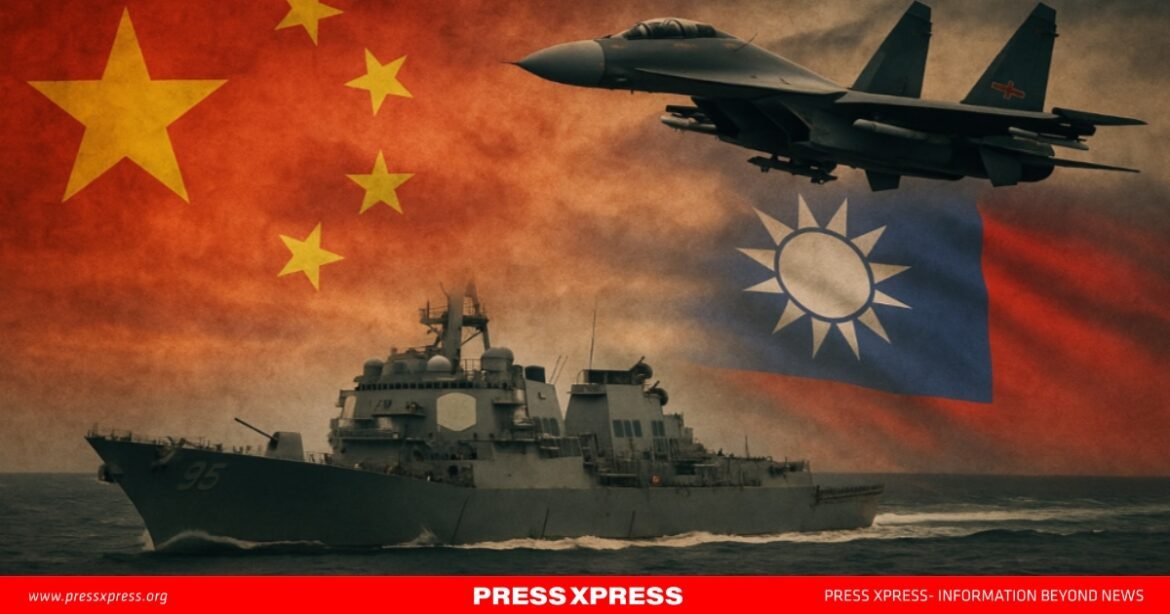As of May 2025, the Taiwan Strait has become one of the world’s most critical geopolitical hotspots. Much like how South Asia remains sensitive to India-Pakistan tensions, East Asia is now witnessing a dangerous escalation involving China, Taiwan, and the United States. The situation is tense, with military exercises, political warnings, and diplomatic stand-offs increasing the risk of open conflict.
China’s Military Posturing Raises Alarm
Since the beginning of 2025, China has significantly intensified its military activities near Taiwan. During its latest drill—code-named “Strait Thunder 2025A”—China’s aircraft carrier Shandong operated within just 24 nautical miles of Taiwan’s coastline. These exercises included simulated airstrikes and amphibious assault training, demonstrating China’s potential readiness for military action.
According to Taiwan’s Ministry of National Defense, over 235 Chinese aircraft and naval vessels entered Taiwan’s Air Defense Identification Zone (ADIZ) between January and early May 2025. Alarmingly, more than 130 aircraft crossed the unofficial median line of the Taiwan Strait—something historically considered an act of serious provocation.
U.S. and Allied Military Response
In response, the United States has visibly increased its military presence in the Indo-Pacific region. In April, the U.S. Air Force conducted its largest-ever “Elephant Walk” at Kadena Air Base in Japan’s Okinawa, involving 53 aircraft, including F-35 stealth fighters and reconnaissance drones.
Moreover, the Balikatan military exercises between the U.S. and the Philippines have expanded considerably. This year, 14,000 troops participated in live-fire drills near the Bashi Channel, a key maritime route connecting the South China Sea to the Pacific Ocean—strategically close to Taiwan.
These moves signal strong U.S. commitment to regional security and are meant to deter any Chinese aggression.
Taiwan’s Defense Strategy: Asymmetric Warfare
Unable to match China’s military strength directly, Taiwan has adopted an asymmetric defense strategy—commonly referred to as the “porcupine strategy.” This approach aims to make any potential Chinese invasion extremely costly and difficult by strengthening mobility, enhancing missile systems, deploying coastal defenses, and using drone technology.
However, Taiwan faces internal defense challenges. Its armed forces currently operate at around 78% capacity, with many posts unfilled. To improve readiness, the government has extended mandatory conscription and increased soldier pay to attract more recruits.
Political Messaging and Strategic Narratives
President Lai Ching-te of Taiwan has drawn comparisons between today’s geopolitical tensions and Europe in the 1930s, warning against the risks of appeasing authoritarian regimes. His administration has called for raising defense spending to 3% of GDP and expanding international alliances.
Meanwhile, Chinese President Xi Jinping has repeatedly emphasized “peaceful reunification,” but his government continues military pressure and international lobbying to isolate Taiwan diplomatically.
This political standoff has become not only a regional but a global concern. Taiwan remains a vital player in the semiconductor supply chain, and any disruption due to conflict would impact technology industries and economies worldwide.



